Original author:@0x_ethan_Crypto
tutor:@CryptoScott_ETH, @Zou_Block
TL, DR
ERC 404 forms a corresponding and mutual conversion relationship between NFT and FT through the protocol, and implements NFT that can transform built-in attributes based on the protocol characteristics. It is defined as an experimental technical solution with a hybrid ERC 20 and ERC 721, with Native liquidity and fragmented semi-fungible tokens.
Different from the mainstream NFTFi business path, the 404 standard asset series cleverly integrates the existing facilities of NFT and FT at the standard layer to establish bilateral liquidity, with card drawable, native fragmentation and AMM liquidity ” new features, if adopted by a large number of projects in the future, there will be more innovative gameplay, greater imagination space and development potential.
ERC 404 is still in its early stages and has not been verified for a long time. It currently has the uncontrollable defect of destroying multiple NFTs and has not been included in the formal Ethereum EIP proposal.
Pandora is only the first project of ERC 404 and cannot capture actual value from the possible future development and widespread application of ERC 404. Its future development depends more on the continued operation of subsequent project parties.
1 Introduction
Each round of Crypto’s bull market has new asset issuance methods and corresponding technical standards, from ERC 20 FT on Ethereum, to ERC 721 NFT, to this round of BTC chain inscriptions, and the inscriptions are currently the most The market recognizes BRC 20, and the recent inscription is also known as the semi-fungible token SFT (semi-fungible Token). This article will introduce a new experimental standard ERC-404 on the Ethereum chain and its first asset Pandora.
The assets created based on 404 enable FT and NFT to form a corresponding swap relationship, realizing the bilateral liquidity of ERC 20 and ERC 721 at the same time, that is, each FT will automatically mint an NFT, and if less than one is purchased, the corresponding NFT will not be minted. . If the user buys, sells or transfers FT and changes that affect the integer FT, the NFT will be destroyed and recast, and then the NFT attributes after recasting will be automatically programmed; if the user wants to keep the NFT, he can also directly trade or transfer the NFT, and the NFT itself is Nothing will change.
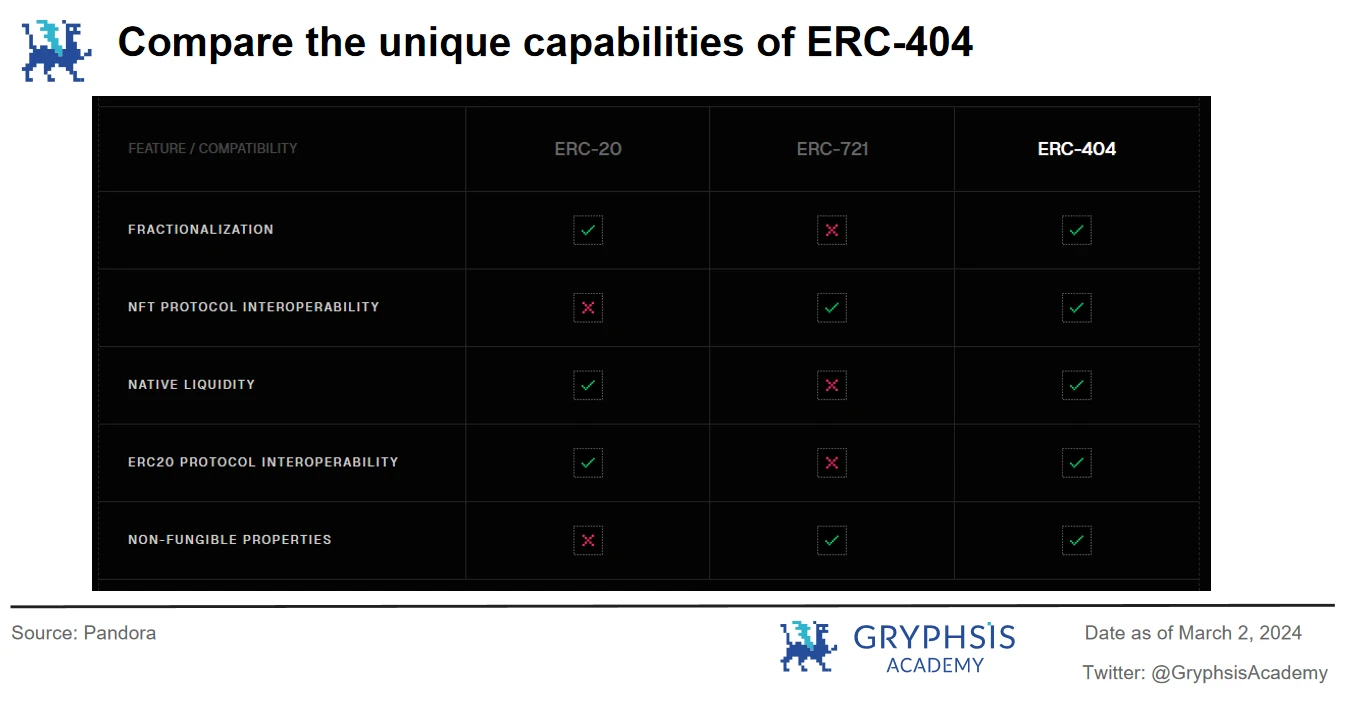
The ERC 404 standard is an experimental standard. In theory, it should be called EIP 404 now, and the number 404 does not comply with the EIP submission specifications.Whether it can be formally included in the ETH standard needs to wait for the foundations response; Pandora is an early project, and although it is the first ERC 404 asset, it has relatively high risks, so treat the related risks rationally.
As of March 2, 2024, there are 719 token contracts established based on the ERC 404 standard, with a total transaction volume of 1.6 B. The main transaction volume is the first asset Pandora, accounting for 55.7% of the transaction volume.
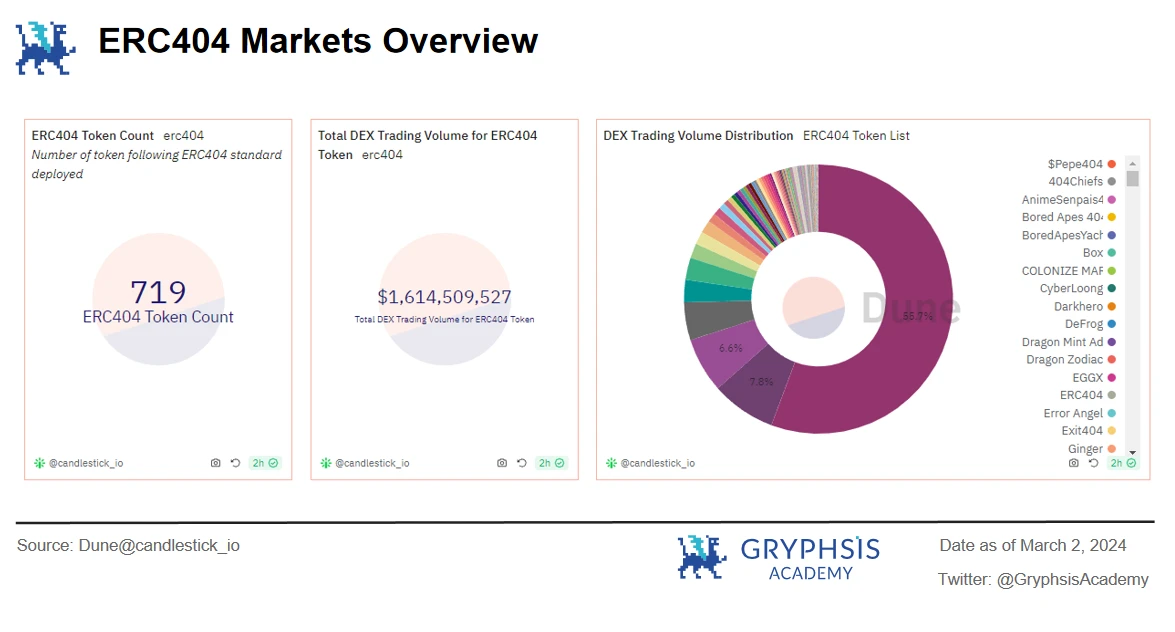
2. Pandora case analysis
2.1 Introduction to Pandora
Pandora is the first project built based on the ERC 404 token standard. It was launched on February 2. 10k PANDORA ERC 20 tokens correspond to 10k NFTs to generate NFT Replicants. Pandora can be traded on Uniswap or Can be traded on NFT markets such as OpenSea.

There are five rarity levels in the series, differentiated by color. When users trade Pandoras FT tokens, Replicant NFT will be issued more or less according to the quantity. For example, 1.3 Pandora will generate 1 NFT, and if there is less than 1 Pandora, no NFT will be generated.Each time a Replicant NFT is regenerated, the rarity is randomized.When transferring and trading NFT directly, the rarity will not be changed.
No specific details have been announced yet about the “unboxing” details and subsequent empowerment projects.
2.2 FT token information and market conditions and liquidity analysis
As of March 2, 2024, the basic information is as follows:
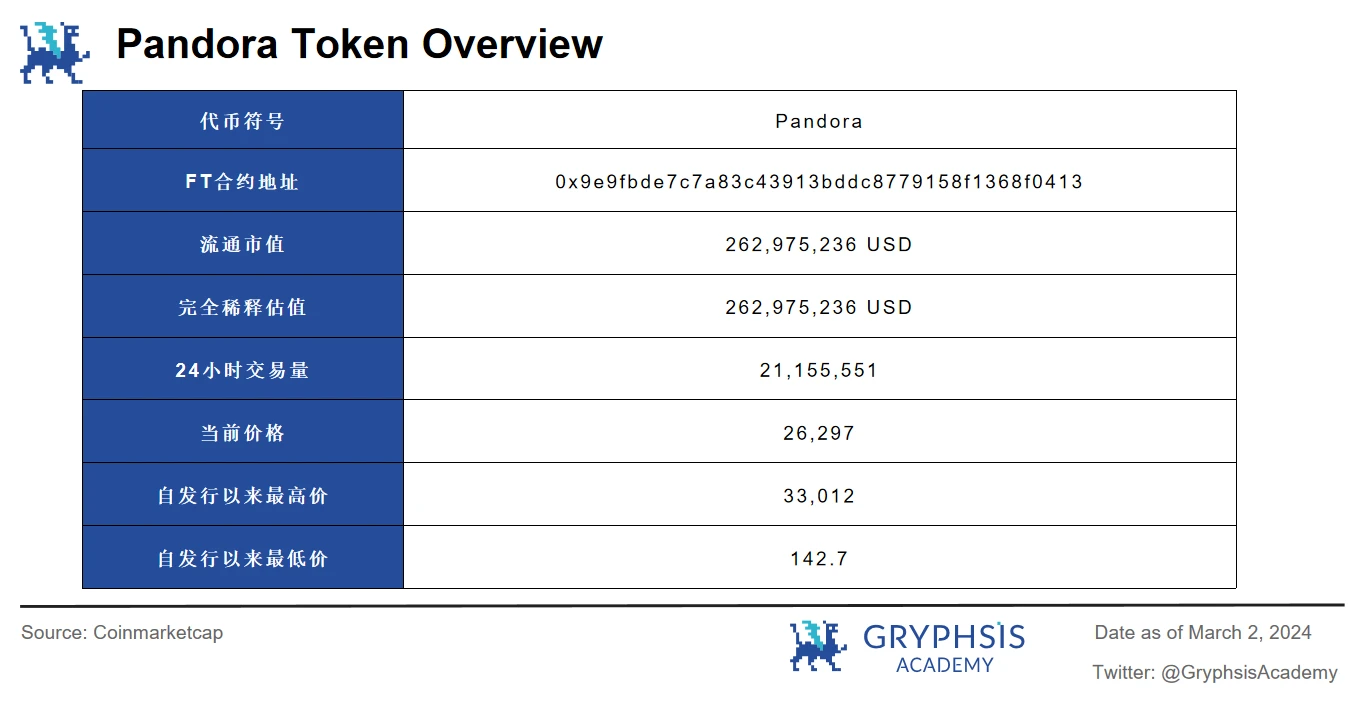
About 67% of the daily trading volume occurs on Uni v3, and the others are CEX such as Bitmart, Lbank, gate, etc.; OKX and Binance wallets already support ERC 404, while Pandora has not yet launched OKX and Binance.
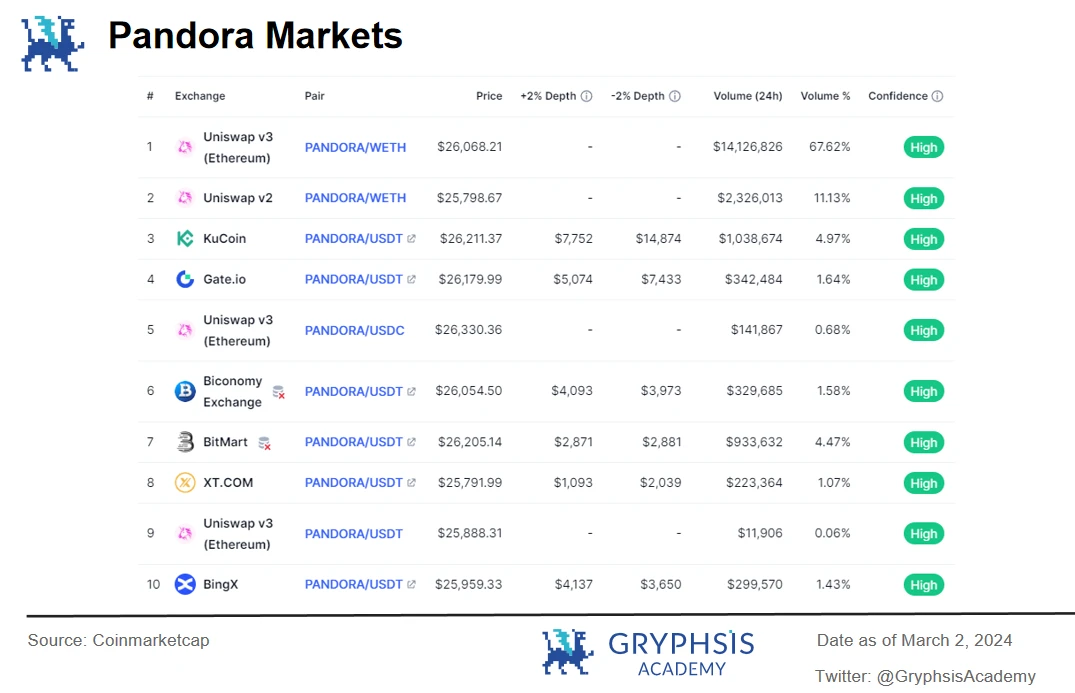
The current WETH liquidity of Uni v3 is 26M, the total TVL is 44M, the 7-day trading volume is about 90M, the turnover rate is high, and the market is competing on price.
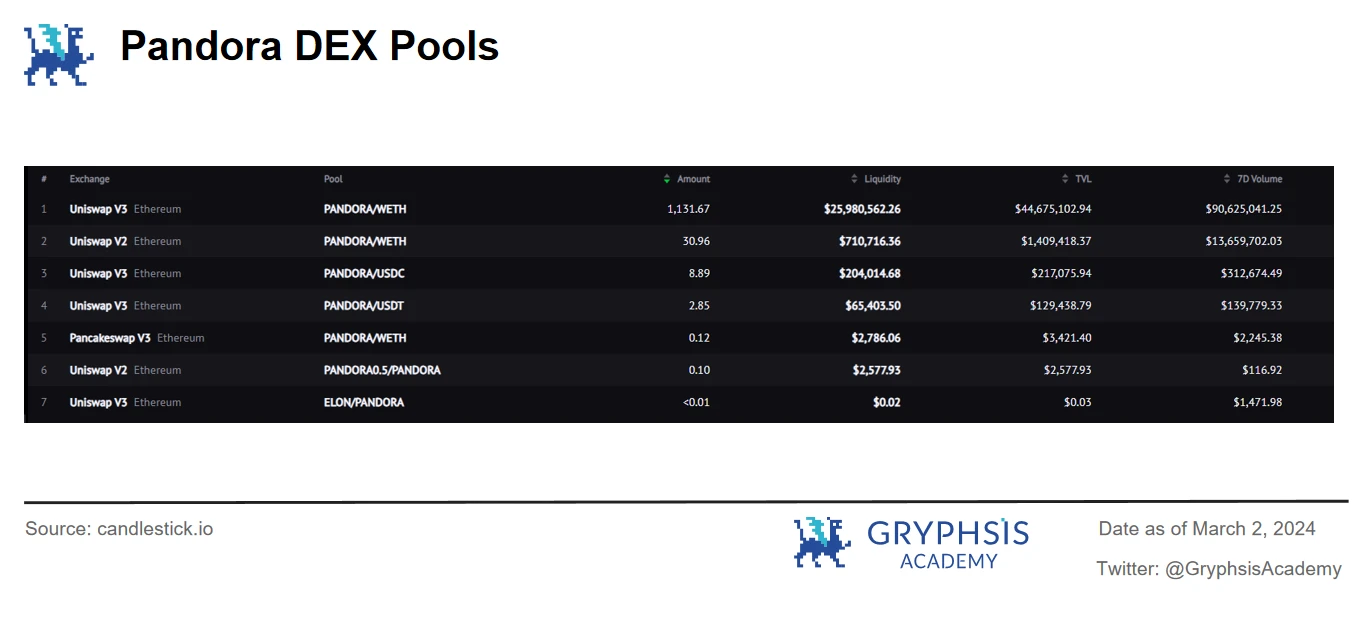
2.3 Comparison of FT and NFT transaction volume data
As of March 2, 2024, the current total DEX trading volume is 870 M. There are 6130 NFTs minted,openseaThe total transaction volume is 1956 ETH. Based on a simple estimate of approximately 3.4 K ETH on March 2, it is 6.6 M. The NFT transaction volume is only 0.7% of the FT transaction volume.Pandora series core liquidity is currently almost entirely priced by Uni v3 AMMIn addition to the fact that AMM liquidity is instant liquidity, the author believes that one of the reasons is that the current empowerment of pandoras NFT series is not yet clear.
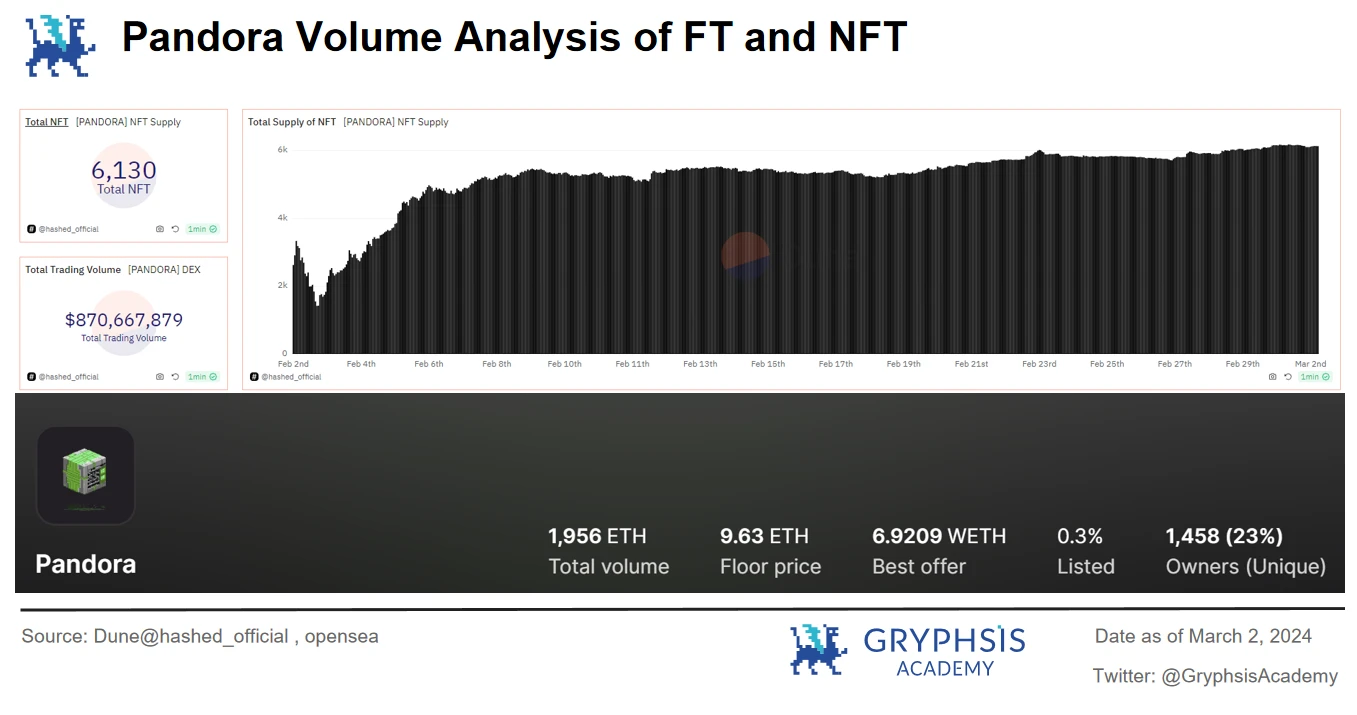
2.4 Currency holding address
There are 10 addresses with positions of 100 and above. The first three are the contract addresses of the official multi-signature wallet, Uniswap v3 LP and Sablier V2 LockupLinea. The chip situation is relatively scattered, with the chip range concentrated between 19,000 and 27,000.
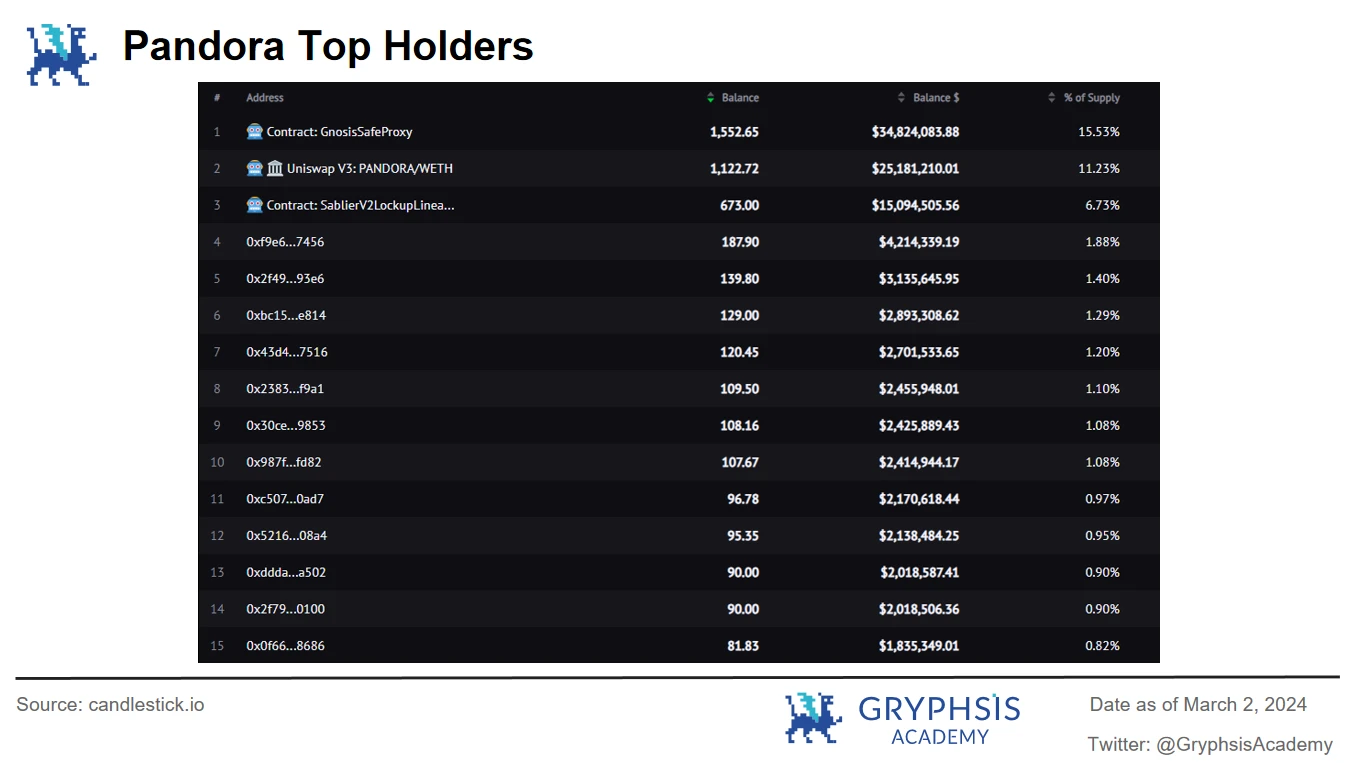

3. Historical origins and team situation
Pandoras idea and 404s technical solution are not actually new things. The author believes that the historical origin of such attempts can be divided into two parts, the third-party fragmentation protocol of the protocol layer on the ETH chain and the chain standard layer. Two standards come from a concept called coin duality: BTC inscription and Solanas DN.
3.1 Third-party fragmentation protocol
On the ETH chain, after the birth of 721 NFT, there were many attempts at new protocol levels due to lack of liquidity. One of them is called fragmentation, such as:
NFTX, which was launched as early as the end of 2020, puts NFTs of the same type and similar prices into a vault. The vault issues corresponding vTokens. You only need to hold enough vTokens to randomly redeem NFTs from the vault.
There is also the star project Fractional that emerged later, which raised 28 million, introduced a new role as curator, and obtained income from fragment auctions, while fragment holders initiated voting to auction and price the NFT in the vault.
The Flooring Protocol, which was launched at the end of last year, deposits the NFT into the Vault and obtains 1 million μTokens. It can then choose to give up ownership and redeem the NFT at random or retain the ownership Key to retrieve the corresponding NFT.
Here is a brief summary: The fragmented third-party protocol allows users who hold NFTs to pledge part of the series of NFTs and exchange them for new ERC 20 tokens issued by the protocol, and then use token incentives, introduce new roles, and empower fragmentation Tokens, redemption of NFTs based on fragmented proportions, etc. hope to achieve the purpose of splitting NFTs to expand the liquidity of NFTs. After the agreement is launched, the vast majority of NFTs deposited in these protocols are blue-chip NFTs.
3.2 The origin of the term duality of graphics and coins
The birth of the chain standard concepts of graph-coin swap, graph-coin integration and graph-coin duality can be considered to come from BTCs inscription protocol and Deez Nuts, the graph-coin swap protocol born in the Solana ecosystem.
Let’s first talk about the original source, the new asset “inscription” of this bull market. Due to the UTXO characteristics and Ordinals protocol and Inscriptions on the BTC chain, after the BRC 20 standard was created, users can engrave any data on sat to give them Its unique characteristics, such an implementation form can be understood as an abstract protocol corresponding to the currency, adding a certain uniqueness on the basis of FT tokens, and adding a certain kind of uniqueness on the basis of NFT tokens. Homogeneity, expressed in the form: when printing the inscription, you type one piece, which is 100% an NFT, and one piece can be split, and the homogeneous tokens inside can be split. It is divided out separately, so it can also be called a semi-fungible token (semi-fungible Token).
Then in January this year, Tiny SPL, a new token standard in the Solana ecosystem that aims to solve the network rent problem, launched the AMM trading mechanism on its own website. Subsequently, its token DN (Deez Nuts) caused market speculation, and DN is detachable. You can also divide or merge the NUTS you hold into the AMM pool as LP; such a design is clearly another inscription of coin exchange in the eyes of Degens.
At this time, the concept of the duality of graphics and currency was initially recognized by the market, and because the technical environment and NFT infrastructure prosperity of each chain were also different, SFT derived new assets with their own characteristics in each chain, starting with BTC ’s inscription, and then Solana’s token swap, then what will appear on ETH, which is the most prosperous DeFi and NFT ecosystem currently?
3.3 ERC 404
In early February, an early protocol appeared again on the ETH chain to try to achieve graph-to-coin duality. There was a new project called Uniswap Emerald, which built NFT liquidity on Uniswap, but it was replaced many times due to contract vulnerability attacks. The team is still developing and repairing the token contract, and Pandora project members were inspired by Emerald.
The 404 standard and Pandora assets are jointly built by the current team of 4 people, and only 3 people have their Twitter profiles published.
@maybectrlfreak(ctrl): An angel investor who claims to have invested in the start-up Syndicate. Syndicates first tweet was posted on January 22, making early investments in BRC 20 and Ordinals trading terminal BeFi Labs.
@searnseele(Searn): No detailed information on Twitter
@0x acme(Acme): Released the ERC 404 standard on Github and worked as an engineer at Coinbase.
4. Implementation principle
As defined in the document of ERC 404, ERC 404 is an experimental, hybrid ERC 20 and ERC 721 technical solution with native liquidity and fragmented semi-fungible tokens.
4.1 Lossy coding scheme
First, understand the operating procedures of ERC 20 and ERC 721:
User A holds 11.11 B tokens. When the user transfers money, the smart contract reduces the corresponding amount according to the balance of B tokens on the A account, and increases the corresponding amount in the target account. The smart contract only needs to manage the balance.
User A holds an NFT in the C series NFT, and the ID of the NFT is 1234. At this time, when the user transfers the NFT, the smart contract deletes the NFT from user A and adds the NFT with this ID to the target account.
Under normal circumstances, these are two distinct asset standards. Smart contracts need to first determine the type before the actual transaction.
Secondly, ERC 404 is designed toA lossy encoding scheme that allows the amount of ERC 20 tokens and the unique ID of ERC 721 tokens to use the same data structure AmountOrId in the contract storage.
Solidity records the ERC 20 token balance in digital form according to the smallest unit Decimals. For example, if you have 2.3 Pandora, it is 230000000000000000 (18-bit decimals). When this number is compared, it is much larger than the Token ID of the NFT, and then the contract will be 721 NFT The ID is also compared as a parameter (for example, ID 1123 and ID 1124), and the contract detects whether the amountOrId containing the two parametersLess than or equal to the current Minted value(i.e. 721 NFT amount has been minted), if so then operate 721 NFT. Otherwise, ERC 20 will be operated, so that the contract can distinguish between ERC 20 and ERC 721 when calling data.
When the lossy encoding scheme allows the smart contract to call the resource resolution type and perform subsequent operations, the Mapping function will track the account status. If the user processes the transfer of ERC 20 tokens through the transfer function, 721 NFT will be destroyed (burn function) and rebuild (mint function); in the mint function, each time a new 721 NFT is created, the minted variable is incremented and then used as the ID of the new token. This means that each new 721 NFT will have a unique, sequentially increasing ID, starting at 1 and increasing by 1 each time.
4.2 Two flaws: uncontrollable flaws in destroying multiple NFT assets and higher gas consumption than normal transfers
When a user holds multiple tokens and the corresponding NFT, if the user transfers FT, the smart contract cannot burn the NFT in an optional manner, and the Burn contract willMinimally perform the destruction operation according to the last owned Token ID.This is a Last In, First Out (LIFO) mechanism. This is likely to delete the NFT that users want more, which is a current design flaw of 404.
In fact, Pandora differentiates this flaw by introducing rarity and encourages users to manually separate the FT in the address because of the rarity. Users can first convert the unwanted NFT to another account and then transfer it back or sell it in the secondary market. , and then operate the FT balance of the account, which can be regarded as solving some of the shortcomings of the protocol itself through the economic model.
Another disadvantage of higher gas fees is that multiple different balances and NFT ownership are stored and monitored in ERC 404, so the contract operation will be relatively complex, which requires more on-chain computing resources and generates slightly more gas fees.
4.3 Pseudo-random number design based on sequential ID (Pandora’s rarity)
Because the tokens correspond to each other, when converting tokens, the protocol will automatically destroy the old NFT and create a new ID in the order of the entire network ID. Therefore, the project can choose to use the ID as the source of pseudo-random numbers and assign different attributes to achieve the goal based on The pseudo-random card drawing gameplay of the protocol features and gives different attributes and visual characteristics.
Pandoras mechanical rarity is based on the first byte of the NFTs ID. keccak 256 hash function and encode the result toPseudo-randomGenerated, and because each ID is mapped to a unique Seed value, a number between 0 and 255 is obtained, and each rarity is classified according to 0-255.
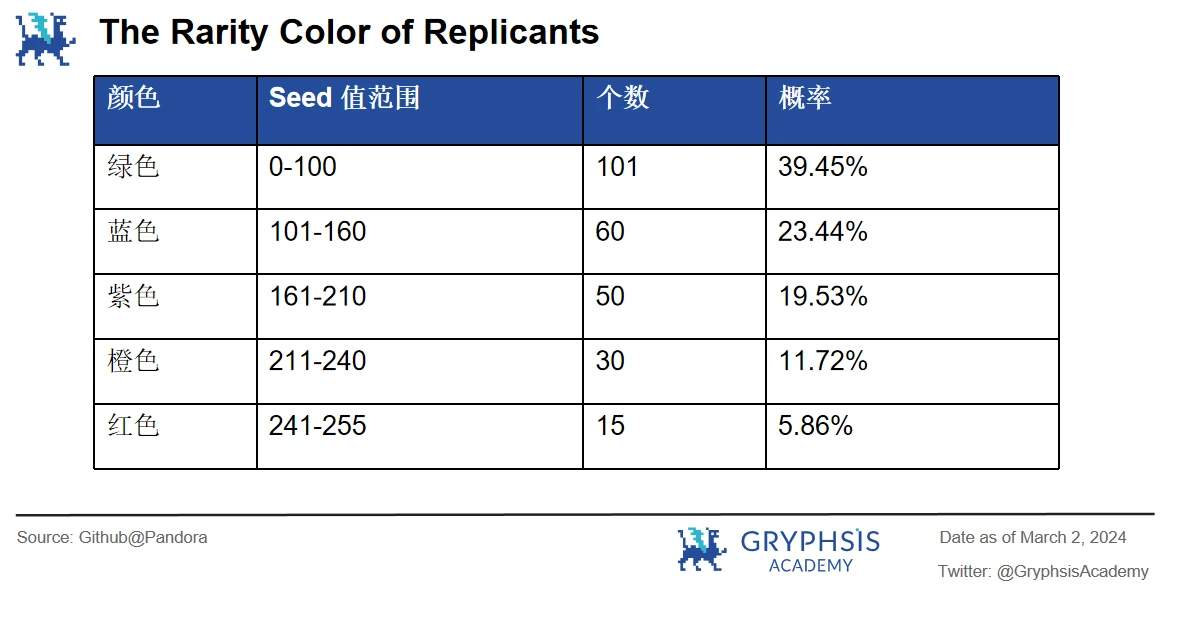
In a practical sense, rarity is due to the sequential nature of IDs. Users who perform recasting actions on the entire network only obtain the seed value after their IDs are calculated in order. Therefore, this card drawing is more like a preset order and preset for all users. The cards are drawn, and different cards are drawn depending on the order of drawing the cards on the transaction chain.
As can be seen from the above table, a red pandora box will be generated when and only when the seed value is between 241 and 255, and the lower the number of random numbers, the fewer times they will be calculated by the hash function. Therefore, the rarity can be Seen as a result of luck and repeated hard work.
For such a rarity design, in the above case analysis, it can be found that the premium of the pending orders in Opensea and Blur for high rarity boxes such as red is much greater than the price of 1 unit of FT, just as some players say swipe again When it comes to the orange box, it’s really exciting.”
As for what the different rarities generated by pseudo-random numbers actually enable, we have to wait for the next step of the project side.
* The initial version of the random number set up by Pandora can eventually turn all existing NFTs into red rarity through infinite pseudo-random numbers. This is an inevitable problem with the current technical logic of drawing cards based on random numbers. This issue has been mentioned in the projects recent v2 update and will be resolved.
4.4 Recent update v2.0
ERC-721 type Token ID is now stored in FIFO (Frist In, First Out, FIFO) queue and reused, instead of being incremented forever when minted and destroyed. This is a predictable set of NFT token IDs, just like a typical NFT collection. This means that the possibility of unlimited rarity mentioned above will be changed. A limited Token ID will generate a limited number of red rarity NFTs, and when the ID is generated completely in sequence for the first time and reaches the upper limit of the NFT series, Unless deleted by mistake the second time, the high rarity will be retained spontaneously due to the users behavior, and there is no possibility of increasing it. The behavior of drawing cards will become unnecessary and meaningless as the incentive decreases.
Transfers of full ERC-20 type tokens will now transfer ERC-721 type tokens held by the sender to the recipient. In other words, if 3 full tokens are transferred as ERC-20, the 3 ERC-721s in the wallet will be transferred directly to the recipient, instead of those ERC-721s that are burned and new token IDs minted to the recipient By.
Predictable events emitted during transfers, approvals and other operations that clearly indicate whether or not they are attributed to ERC-20/ERC-721.
Removes fixed supply caps from contracts, allowing for selective addition of fixed token supply caps as needed.
Simplification and centralization of transfer logic, extensive logic optimization and GAS savings.
Supports EIP-2612 and EIP-165, etc.
5. Differences from ERC 721-NFT
The author believes that assets based on the 404 standard cleverly mix the two distinct protocol standards of ERC 20 and ERC 721, and the nature of the assets is difficult to define. They can be called inscriptions on the ETH chain and native fragmented variable attributes. NFT” or “meme coin with NFT”. The refreshable attributes brought by the technical mechanism are another unique value.
1. Fragmentation and native liquidity of the standard layer
404s FT can provide native liquidity on DEXs such as Uniswap and automatically generate NFT; relying on the long-term development of extremely complete DeFi infrastructure, 404 FT can even directly support lending agreements, perpetual contracts and other agreements on the chain in the future to carry out complex transactions. DeFi operations.
2. The card drawing logic and interchangeability inherent in the NFT series
It is known that the Token ID is limited, so each ID can naturally be assigned to different attributes and different visual presentations. 404 NFT has programmable functionality and pseudo-randomness.
Therefore, users can use Gas fees to perform pseudo card drawing in a circular sequence with less friction in the on-chain environment, thereby obtaining one of the ordered preset NFT series based on pseudo-random numbers, which is more powerful than 721 NFT. Interesting changes and native experience.
However, in essence, because the rarity is actually fixed from the beginning, it is called pseudo-randomness. Therefore, once a high rarity is refreshed, the refresh will gradually lose its meaning. Pandora does not actually transfer rare NFTs frequently. gameplay.
3. The value and pricing power of different attributes of assets are clearly divided.
Each unit of FT corresponds to each quantity unit of NFT, so that the underlying value of each NFT is quantity 1. There is no cognitive threshold for users, so they can obtain more adequate pricing and liquidity through AMM.
And because 404 NFT can replace random numbers through transfers, Pandora holders will even happily experience opening moments similar to 721 NFT many times in the early days. Therefore, rare NFTs traded at high premiums in the NFT market clearly reflect the market value of the probabilistic attribute of luck and multiple refreshes, that is, rarity.
Summary: FT is the floor price of the entire 404 NFT series, while 404 NFTs of different rarities are the floor price plus random number value. This is quite different from users perception of the value of PFP 721 NFTs in general, such as which PFP clothes and shoes look good, or cultural attributes, etc.
6. Discussion on the development of NFTFi
The author believes that if 404 NFT is defined as a category in broad NFT, then ERC 404 can be regarded as a unique NFTFi solution for this type of NFT.
When Pandora was launched recently, many KOLs expressed that once this paradigm innovation of asset issuance is recognized and adopted by a large number of new projects, some NFTFi will withdraw from the stage of history. The author tries to do some dismantling analysis here:
First, we divide NFTFi into Trading, Lending and Derivatives according to needs.
NFT Trading currently has four methods: order book, aggregator, fragmented protocol, and AMM. Examples are Opensea, Blur, NFTX, and Sudoswap.
NFT Lending is peer-to-peer lending, peer-to-pool lending, buy now, pay later, etc. There are not many projects in this type, such as Blend, BendDao, etc.
The NFT Derivatives project has not found a good project with TVL, and derivatives protocols with higher liquidity requirements may be relatively early at present.
Then we start to understand the many NFTFi projects mentioned above, and we can initially summarize two characteristics:
First, the liquidity and pricing of most NFT series rely on the order book model. Real-time liquidity solutions such as AMM mechanisms and fragmentation only account for 0.12% of the market transaction share of Sudoswap, which means that real-time liquidity solutions have almost no market share.
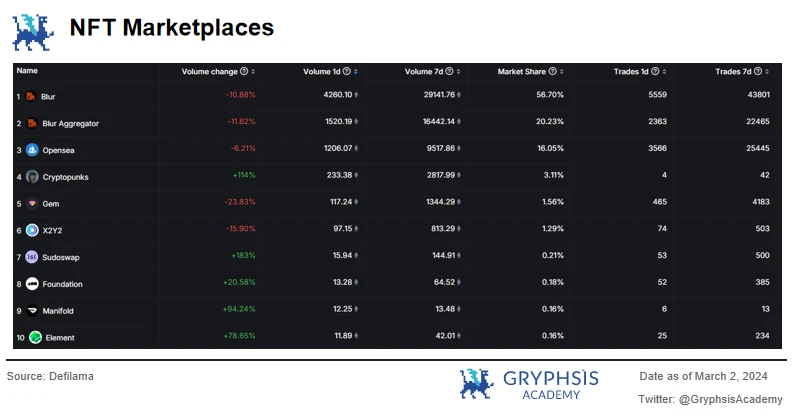
Second, in terms of NFT Lending, Blend uses a peer-to-peer solution to occupy an absolutely dominant position. The NFT Lending protocol has several characteristics: the protocol relies on token incentives to attract external funds into the capital pool as lending liquidity; it introduces complex gaming mechanisms or third parties to provide price clearing and other actions; except for Blend, other protocols rely on Blur. There are security risks and trust and understanding thresholds for the user side. The NFTs and external liquidity circulating under layers of screening are decreasing layer by layer.
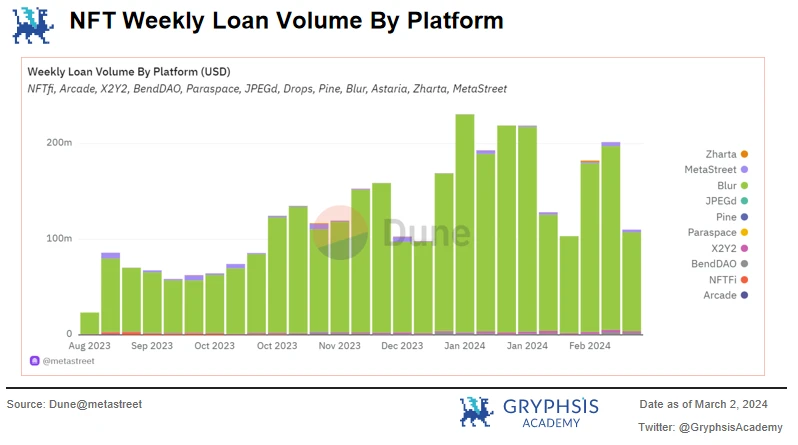
When we compare the issuance logic and business path of the 404 project with mainstream NFTFi, we can find many differences:
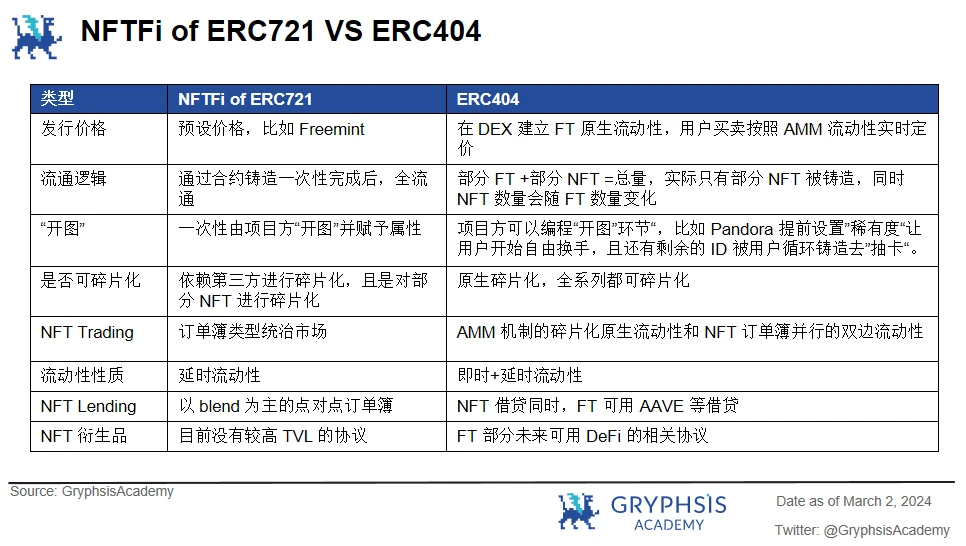
After comparison, the author can preliminarily believe that 404, as a new asset class, is quite different from the mainstream NFTFi business path of 721 NFT.404s asset series cleverly utilizes the existing facilities of NFT and FT to establish bilateral liquidity, and has the new features of card drawable, native fragmentation and AMM liquidity, once it matures, there will be more innovative gameplay, more interesting imagination and development potential.
7. Project risk analysis
ERC 404 and its initial project Pandora are still in their early stages, and there are corresponding risks at both the standard and asset levels:
The ERC 404 standard itself has the problem of uncontrollable destruction of NFT assets and high gas fees due to complex logic.
The ERC 404 standard is complex and has not been verified for a long time. It may have unknown security vulnerabilities, which may lead to the risk of being attacked by hackers or unexpected problems.
ERC 404 is an experimental standard, and in theory it should now be called EIP 404, and the number 404 does not comply with the EIP submission specifications. You need to pay attention to the ETH Foundations response to this standard.
Pandora is only the first launch project of ERC 404. It cannot capture actual value from the possible future development and widespread application of ERC 404. It may capture some emotional value in the future.
Pandora has not yet opened the map. As an NFT series, it still needs the continued operation of the project party, and there is the possibility of being overtaken and replaced by other 404 standard projects.
8. Other 404 standards
After the recent popularity of ERC 404, some similar standards have emerged in the market. The future development of these protocols may require attention from the perspective of meme assets such as Ordi and the wealth effect. If viewed from the perspective of blue-chip NFTs such as Boring Monkey, then It is the community atmosphere and operation style. The author will only give a brief introduction to similar standards here.
8.1 DN 404
Unlike ERC 404, which attempted to merge the ERC-20 and ERC-721 standards into a single contract, DN 404 utilizes two separate but related contracts - the base ERC-20 contract and a mirror ERC-721 contract for unique NFTs . The current highest trading volume series for assets based on this criterion isAsterix, a total of 10,000 PFPs. The operational details are currently uncertain. The project team mentioned that snapshots will be taken until the subsequent map opening. The current FDV26 M。

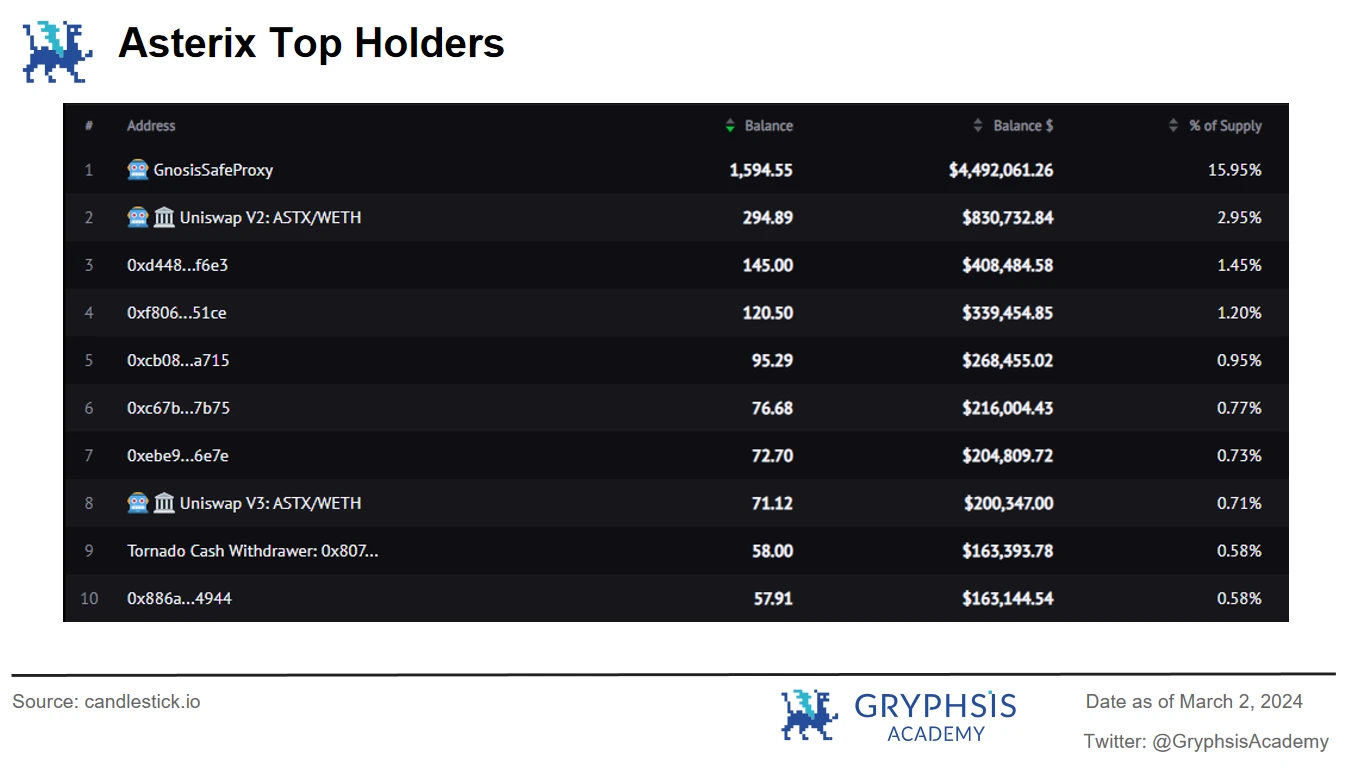
8.2 ERC-1111
A new token standard developed by the PFPAsia team, also known as the REDT protocol. Using controllable state changes, the conversion process between FT and NFT is led by users. At the same time, the ERC-1111 protocol can reduce the corresponding quantity ratio of NFT and FT.
The PFPAsia team adopted the ERC-1111 standard and developed 10,000 PFP NFTs with a new Korean and American mixed style. At the same time, the ratio of NFT to FT is 1:10000. It began to be announced in January and FT was publicly sold in February. It is currently on sale. NFT freemint is being sold in a whitelist format. As of March 2, the FDV is 1.7 M. The conversion of graphics and coins has not been enabled and the graphics have not been opened.
In August last year, HashKeyNFT collaborated with NFTAsia and PFPAsia to jointly create and launch commemorative SBT to commemorate HashKey Exchange becoming Hong Kongs first Hong Kong-compliant licensed trading platform for retail users.
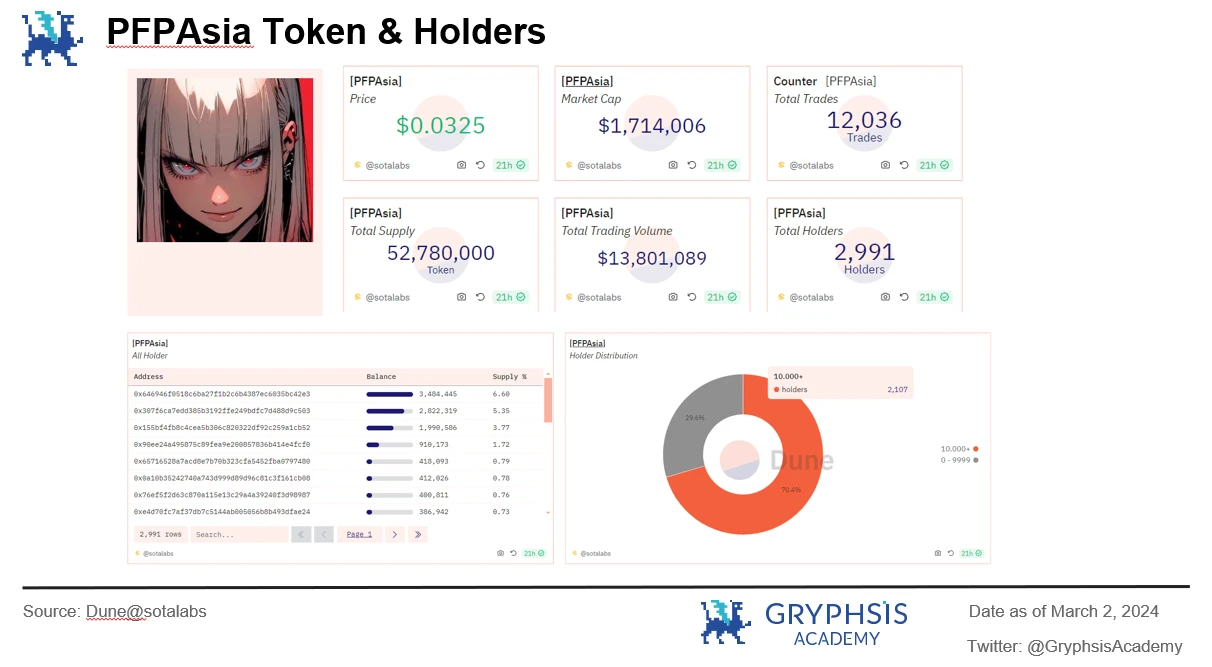

8.3 ERC-X
Multiple standards (ERC-20, ERC-404, ERC-721, ERC-721 A, ERC-721 Psi, ERC-1155 and ERC-1155 Delta) can be used in one standard, making ERC-1155 and ERC-721 The tokens will be supported by the protocol and will save gas fees.
The project developed by this standard is MINER. The goal is to make a full-chain mixed token volatility mining protocol based on the LayerZero standard. It will encapsulate the NFT assets and MINER tokens on the chain, and hopes to take a commission and share it with the token holders. Share the proceeds.
When it was first released, there was a contract vulnerability issue. The vulnerability was fixed on February 19th and restarted. As of March 2nd, FDV3 M。
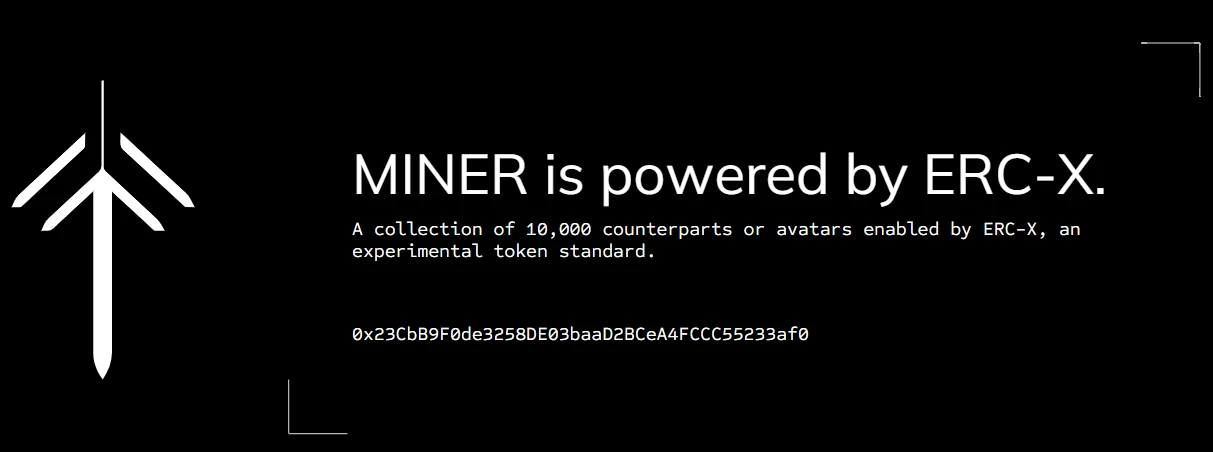
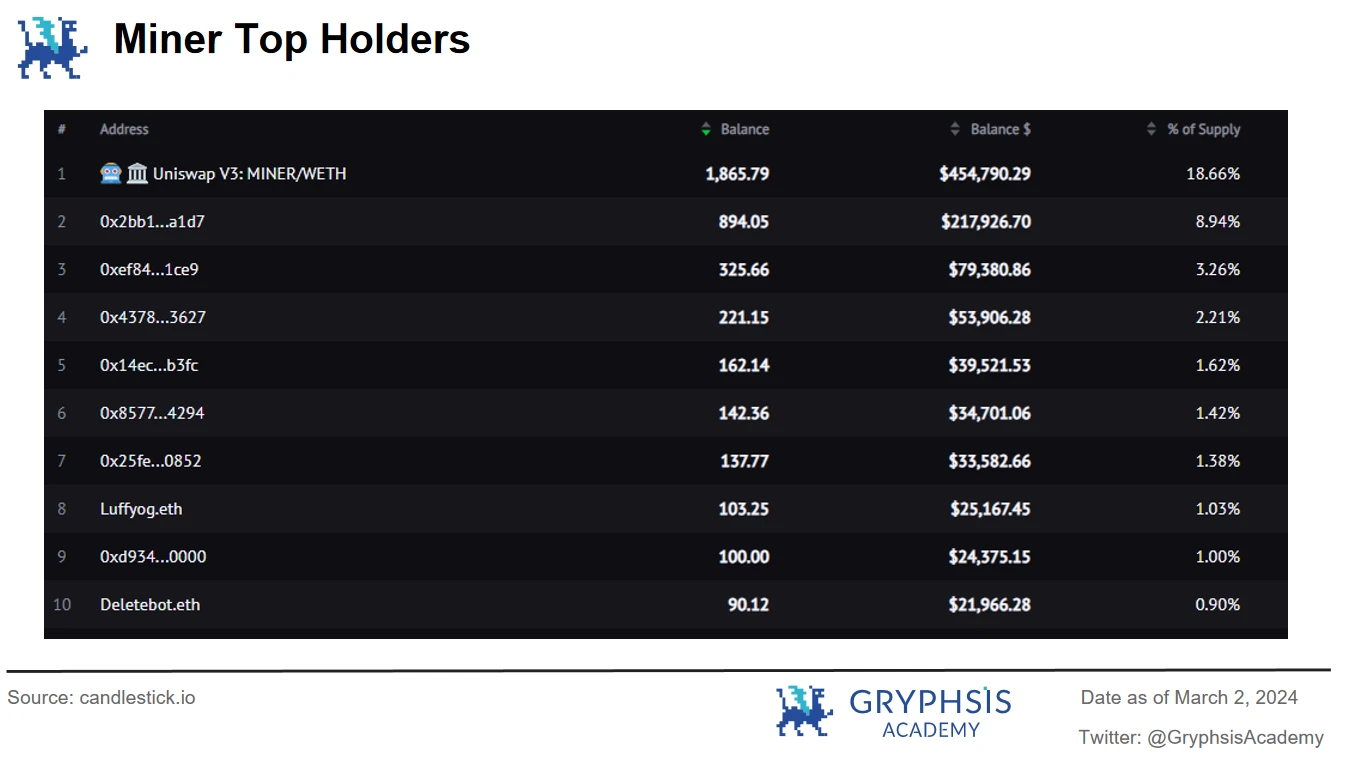
8.4 ERC-404+
Developed by the Forge project, the _burnedTokenIds array is added to track all IDs of destroyed NFTs. Once the total supply limit is reached through the Mint function, the contract design will recycle the ID of the new NFT from the _burnedTokenIds array, which is close to Pandora v2 in design ideas. The current representative project of ERC-404+ is FORGE, which is a series of 6666 PFP NFTs. As of March 2, FDV has approximately520 K, and the Forge official website has recently launched Launchpad, and a project has been launched.

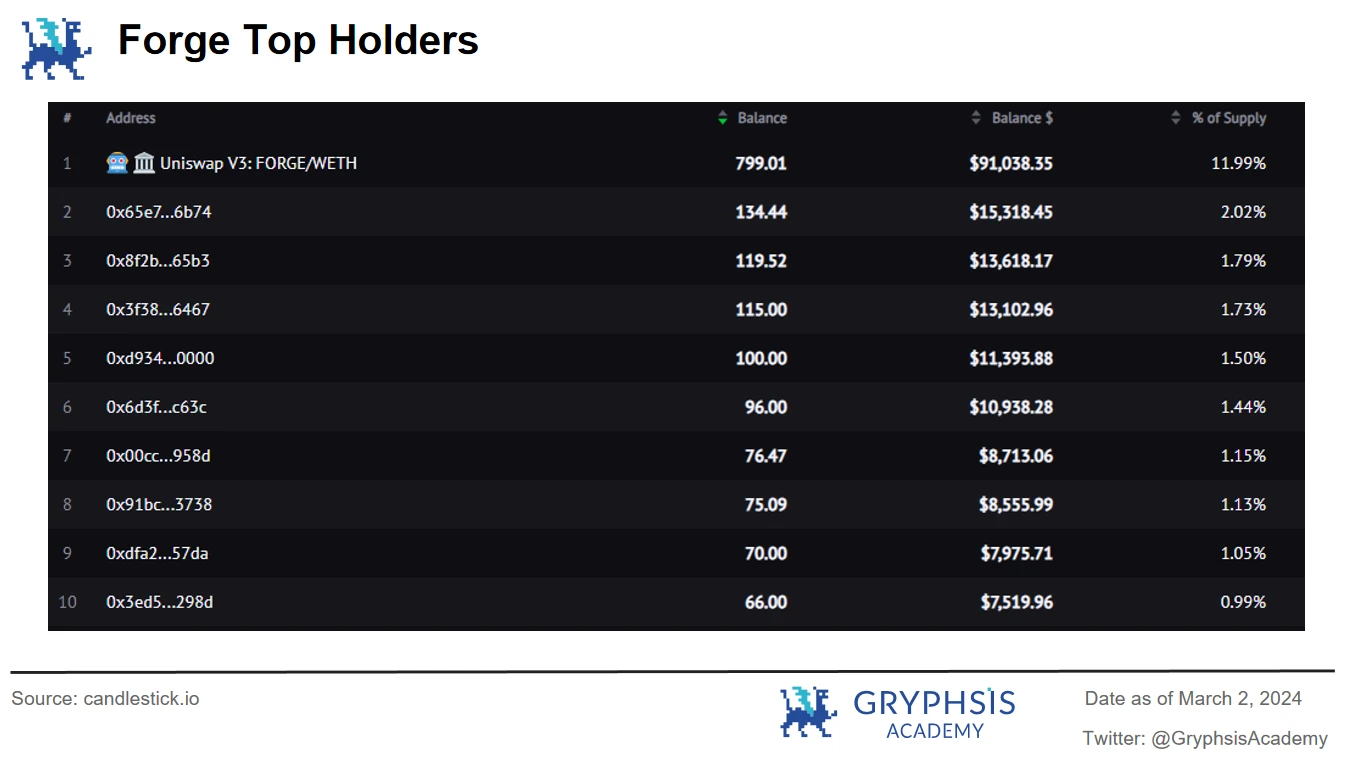
9. Summary and outlook
As a new asset class, 404-type assets make very clever use of the existing facilities of NFT and FT to establish bilateral liquidity, and have card drawable, native fragmentation and AMM liquidity at the standard level. New features, and the ability to use the mature Defi infrastructure on the ETH chain to conduct more complex financial operations in the future is an interesting new development direction for NFT.
Looking to the future, the 404-like standard may see the emergence of new blue chip NFT series in a series of future attempts, and there are many interesting NFT use cases and scenarios. One of the scenarios the author is imagining is full-chain Gamefi, and the possible use cases One is functional NFT or tool NFT. Programmable variable attributes and native fragmentation empower these two types of NFT with more complex value and use DeFi facilities to fully price and even increase financial gameplay. Imagination is just a suggestion, and exchanges and discussions are welcome.
References
https://github.com/Pandora-Labs-Org/erc404/tree/main
https://twitter.com/tmel0 211/status/1755080458596175922
https://twitter.com/hiCaptainZ/status/1743871785987355114
https://foresightnews.pro/article/detail/53101
https://foresightnews.pro/article/detail/53925
[Statement] This report is produced by@GryphsisAcademys student@0x_ethan_CryptoCompleted original work, tutored by Gryphsis Academy@CryptoScott_ETHand@Zou_BlockGive suggestions for modifications. The authors are solely responsible for all content, which does not necessarily reflect the views of Gryphsis Academy, nor the views of the organization that commissioned the report. Editorial content and decisions are not influenced by readers. Please be aware that the author may own the cryptocurrencies mentioned in this report. This document is for informational purposes only and should not be relied upon for investment decisions. It is strongly recommended that you conduct your own research and consult with an unbiased financial, tax or legal advisor before making any investment decisions. Remember, the past performance of any asset does not guarantee future returns.










